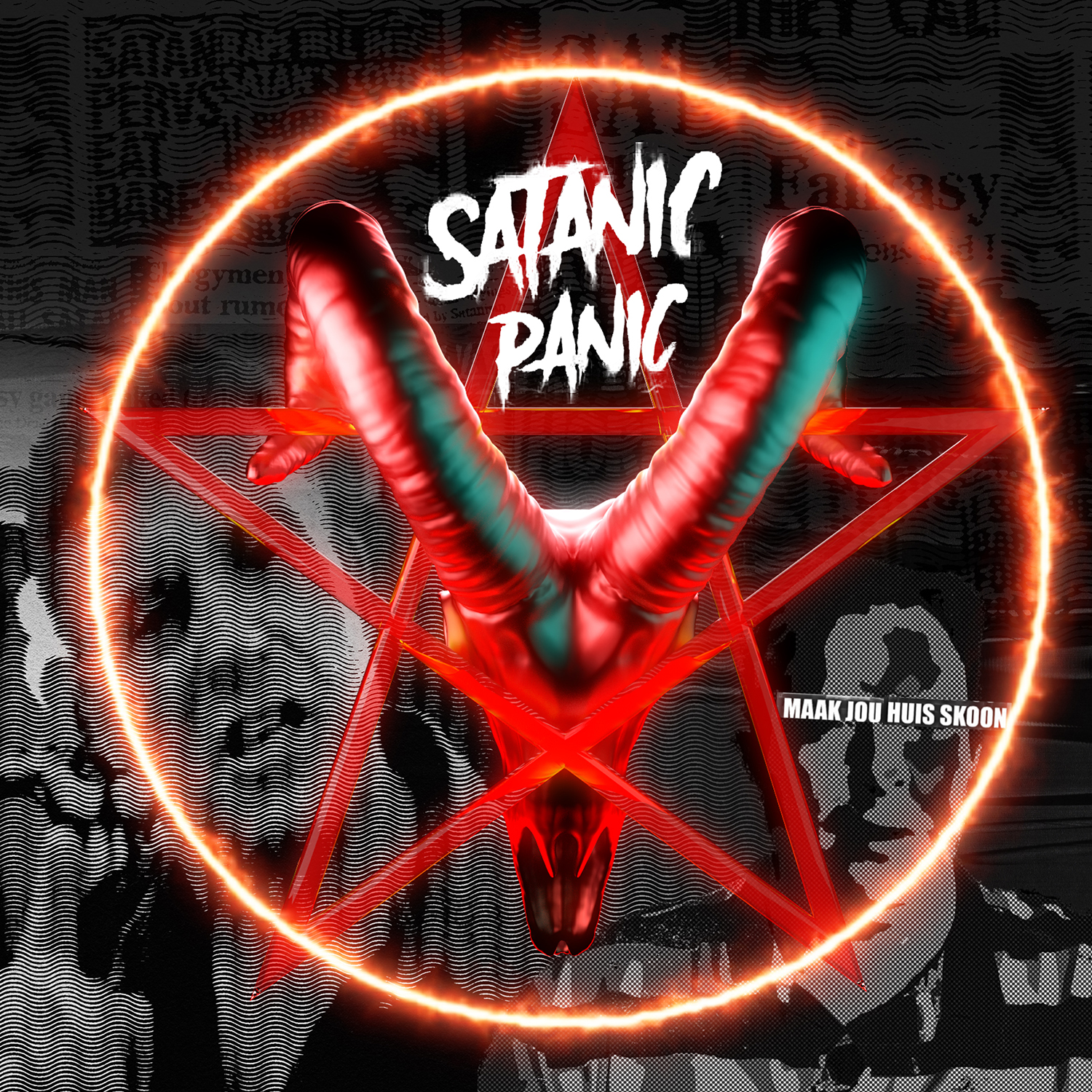Being Afrikaans, with both of my parents as dominees (ministers of the Dutch Reformed church), satanic panic formed an integral part of my childhood.
My earliest memories of it began in church, and with a DVD called Maak jou huis skoon (clean your house). My cousins and I were the first of my immediate family who felt this specific white retaliation against satan and his brainwashing techniques, which according to Tiaan Gildenhuys- the creator of this series -was attacking us through popular culture. My aunt collected everything that- according to Tiaan -was demonies (demonic) and made a large pile in her back yard. The items included clothing with “hidden messages” often disguised as “faces”, cultural objects that fell outside of Afrikanerdom which could have bee literally anything; CDs with “hidden messages” in the lyrics, Harry Potter books and DVDs, Pokemon cards and my cousin’s objects from her room that had pictures of fairies on them. After stacking all of the items together she proceeded to make a large bonfire, praying all the while. After that, the DSTV subscription was cancelled due to unsavoury messaging from mass culture. We were allowed only Christian music and Bibles as well as other approved Christian literature. No longer were we allowed to buy anything without it being pre-approved as a non satanic object. This craze subsided over the years until one day, my father decided that my grandmother was worshiping satan. My father and his sister entered my grandmother’s house and destroyed all “satanic” objects, including skull ornaments, candles and Steven King novels.
The nature and extent of satanic panic is intertwined with culture and politics. After the wave of satanic panic that swept over the country during the late 80s to early 90s as a result of the collapse of apartheid and ensuing white paranoia; there have been a number of resurgences of the phenomenon over the years. It seemed to go mute for some time as the church- the Dutch Reformed Church to be more specific -became more fixated on whether or not they would let queer folks go to church. And then there was the incident of the Curro artworks. The collapse of apartheid saw the devil leaning in to control white South Africa. A ‘New South Africa’ was born yet the country was filled with uncertainty. From 1990 to 1994 civil unrest deepened. During this time of political unrest and constant change many white South Africans became obsessed with a completely different issue; Satan. The only certainty available was that white minority rule had come to an end and a new fear arose; that Lucifer’s children were setting the stage for an era of Satanism. Drugs, lust, perversion and a promise of power reportedly, bound young minds to satan himself. Across the country white youths were attracted to satanic rituals of the Black Mass making pacts with the devil as they drank drug infused wine and ate human flesh.
Guided by satanic adults these youths wrote out blasphemous words in blood, conjured demonic forces and participated in an array of other dark activities. Warning reports of devil worship increased in 1989. In 1990, fears of satanic activity had become alarming with reports of Satanism found in Cape Town, the Peninsula, Paarl, Somerset West, Port Elizabeth, East London, Durban, Pietermaritzburg, Pretoria, Johannesburg, the East Rand, the West Rand, Oudtshoorn, Richards Bay, Dundee, Newcastle and a number of small Karoo towns. Heinous graffitied words marked surfaces, graveyards were desecrated, children went missing and divorce rates were up. There were a number of warning reports claiming that white cars were following children in school districts, and that these unholy gangs of people were finding recruits amongst them by offering the kids laced soft drinks, candy and stickers. With these horrifying allegations of satanic activity in the country rife in the public imagination; finding actual Satanists proved difficult for anti-satanic crusaders. However, such claim makers were not moved by the lack of evidence. These reports clearly speak to the imaginaries of the minds of conservative Christians and a self-appointed moral police. Regardless of the lack of evidence, rumours fuelled a growing hostility and anxiety about a perceived satanic onslaught. To those in fear, it seemed as though there was a mass of Satanists whose aim was to cripple the nation and their tactic rested on targeting the “softest targets for corruption” the white youth.
The collapse of apartheid and the birth of a democratic South Africa was characterised by unrest with the country occupying a space of liminality from 1989 to 1994. The fear of devil worship in white South African society saw the fusion of socially undesired behaviours such as drug abuse and queerness as well as the influence of popular culture. The threat of Satanism is a scapegoat for the underlying anxieties relating to hegemony and cultural unity as socially and politically, the country was changing. But satanic panic is once again on the rise and often seems to stem from white Christian moralists. I remember looking at the video that Richard’s Bay Pastor Andrew Anderson uploaded relating to the Curro school matric artworks. All I could do was laugh, at his complete lack of understanding or even attempts to foster an understanding of what the student was attempting to express with the works. “The artworks in this exhibition explore the commercialisation of contemporary organised religion as well as the monetary exploitation of the faithful by greedy individuals who hide behind the disguise of a church or similar pious institution. They discuss [through the appropriation of religious imagery] how contemporary religion has become superficial” (Brett Magill, Curro Artwork Creator).



















































